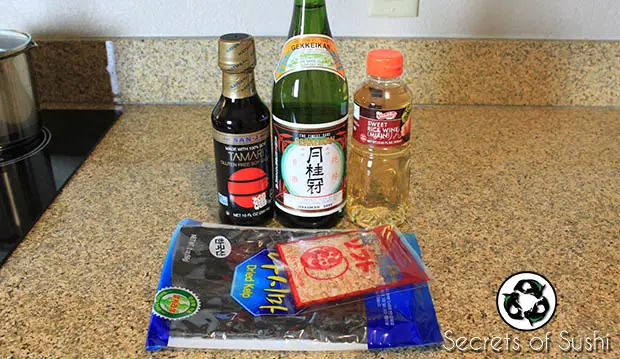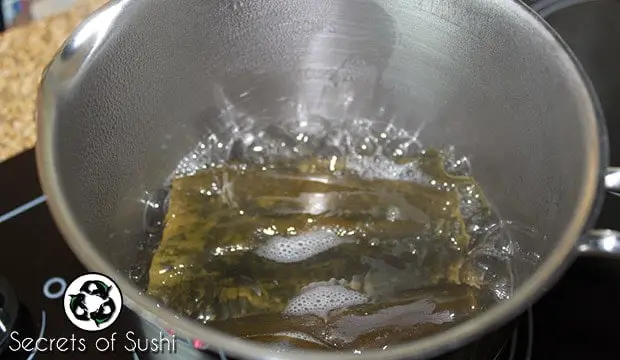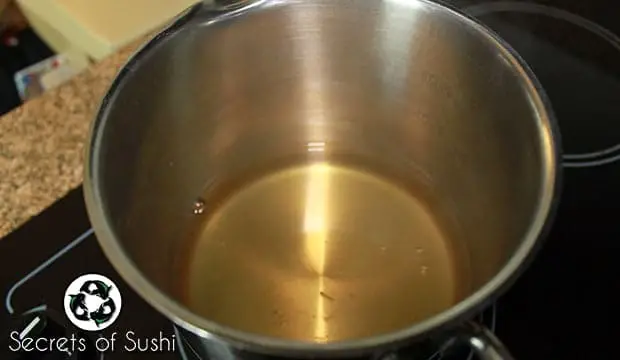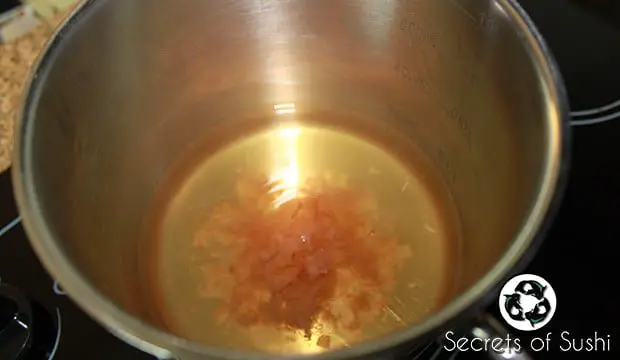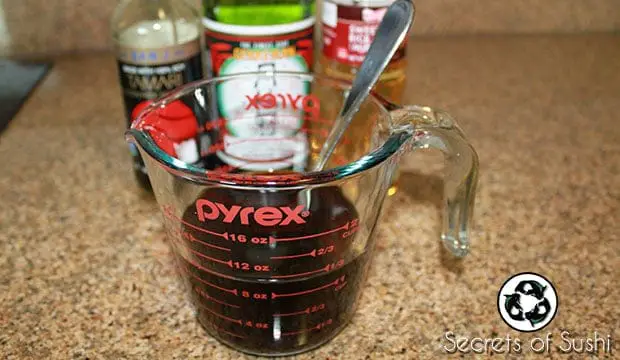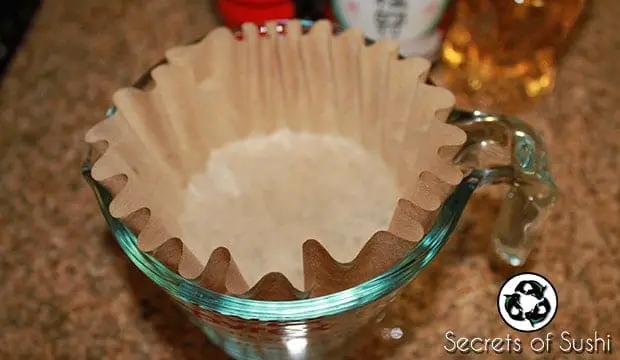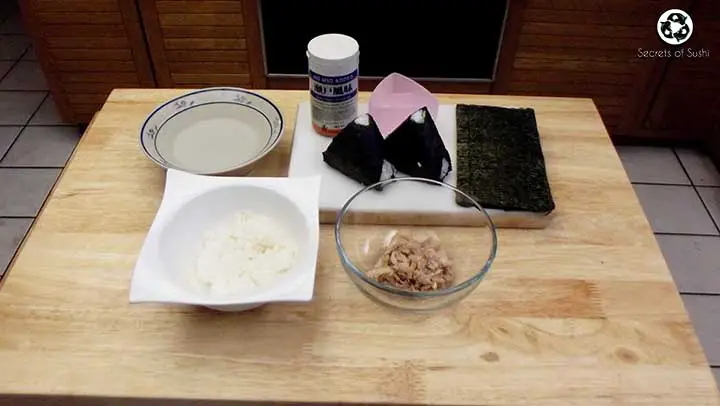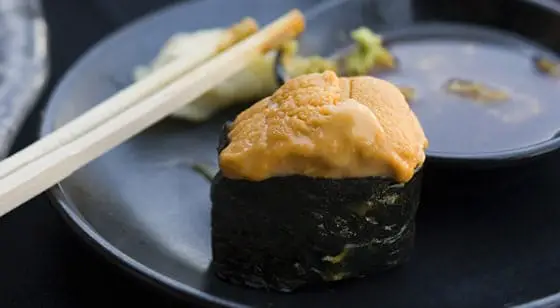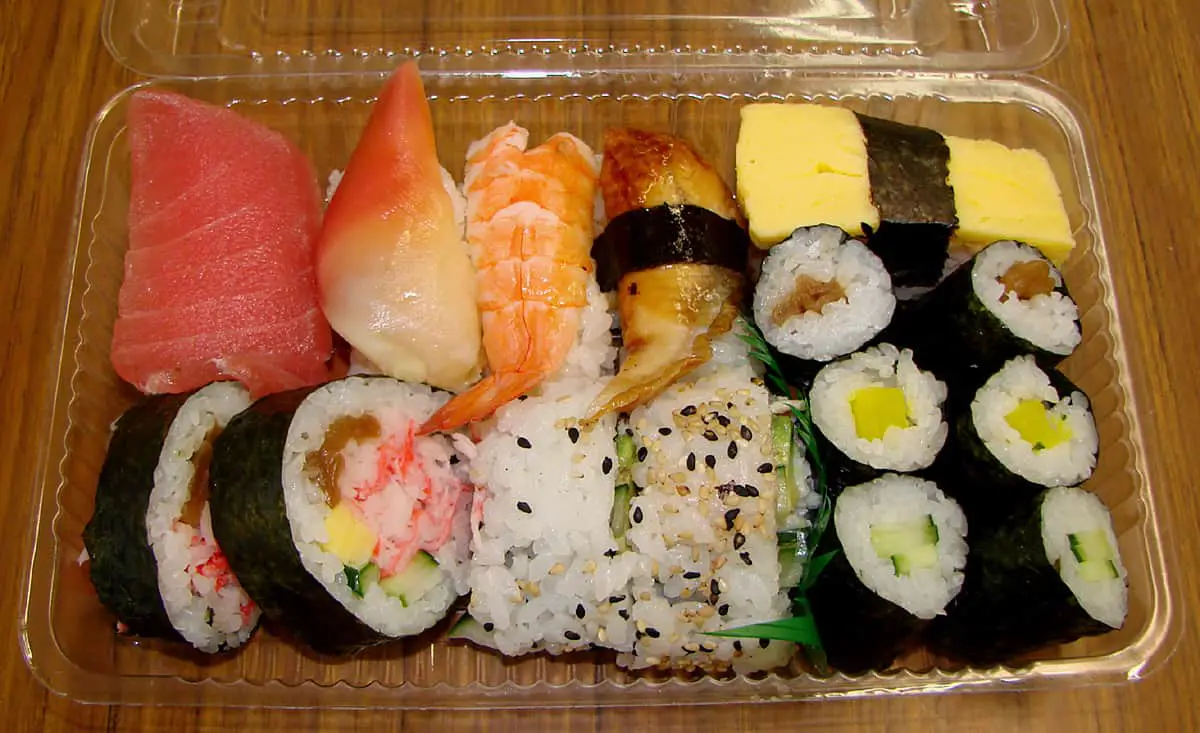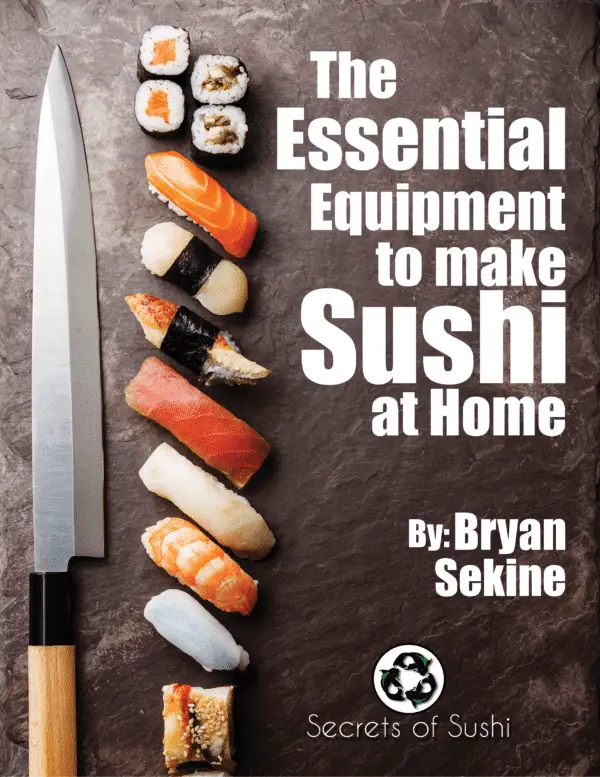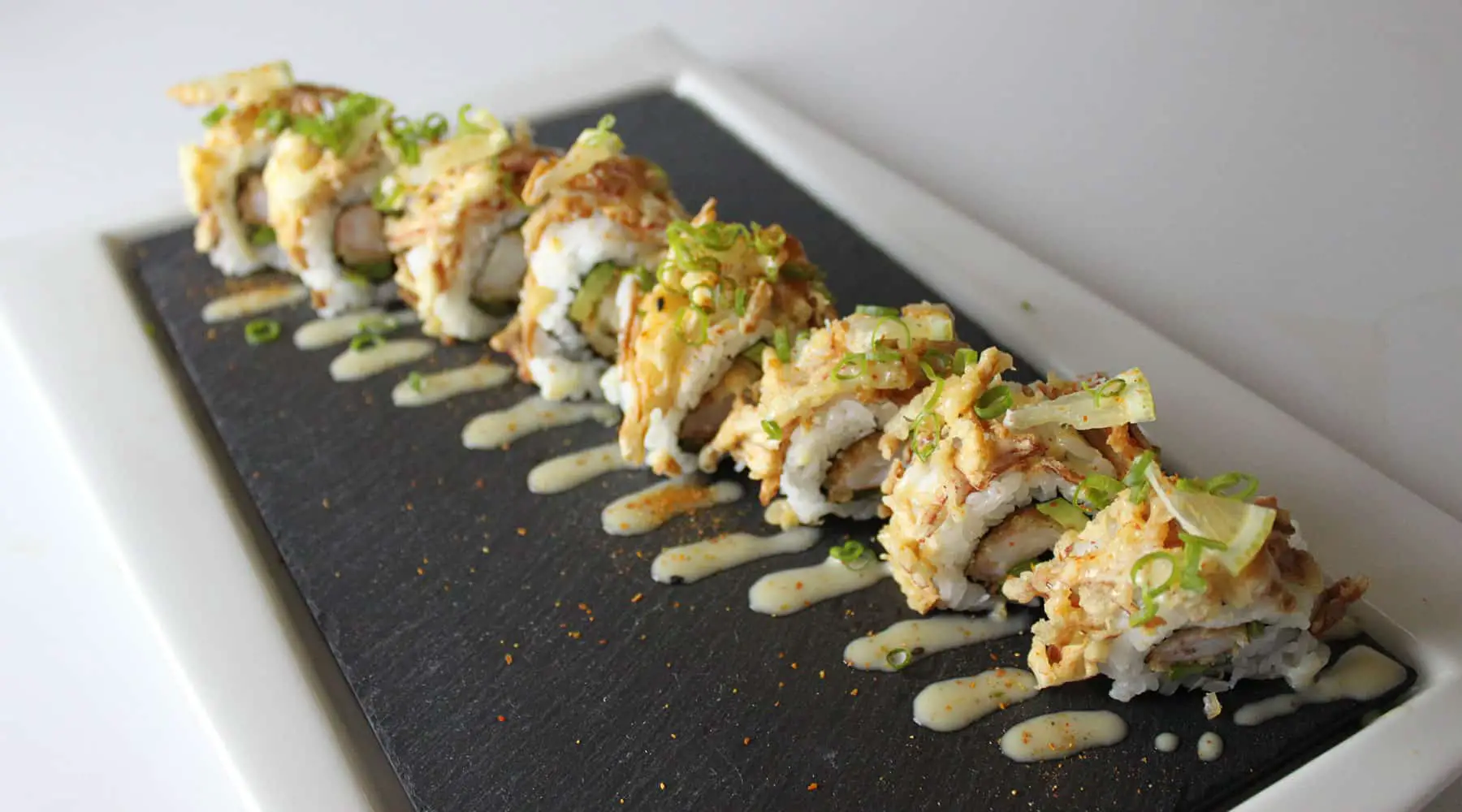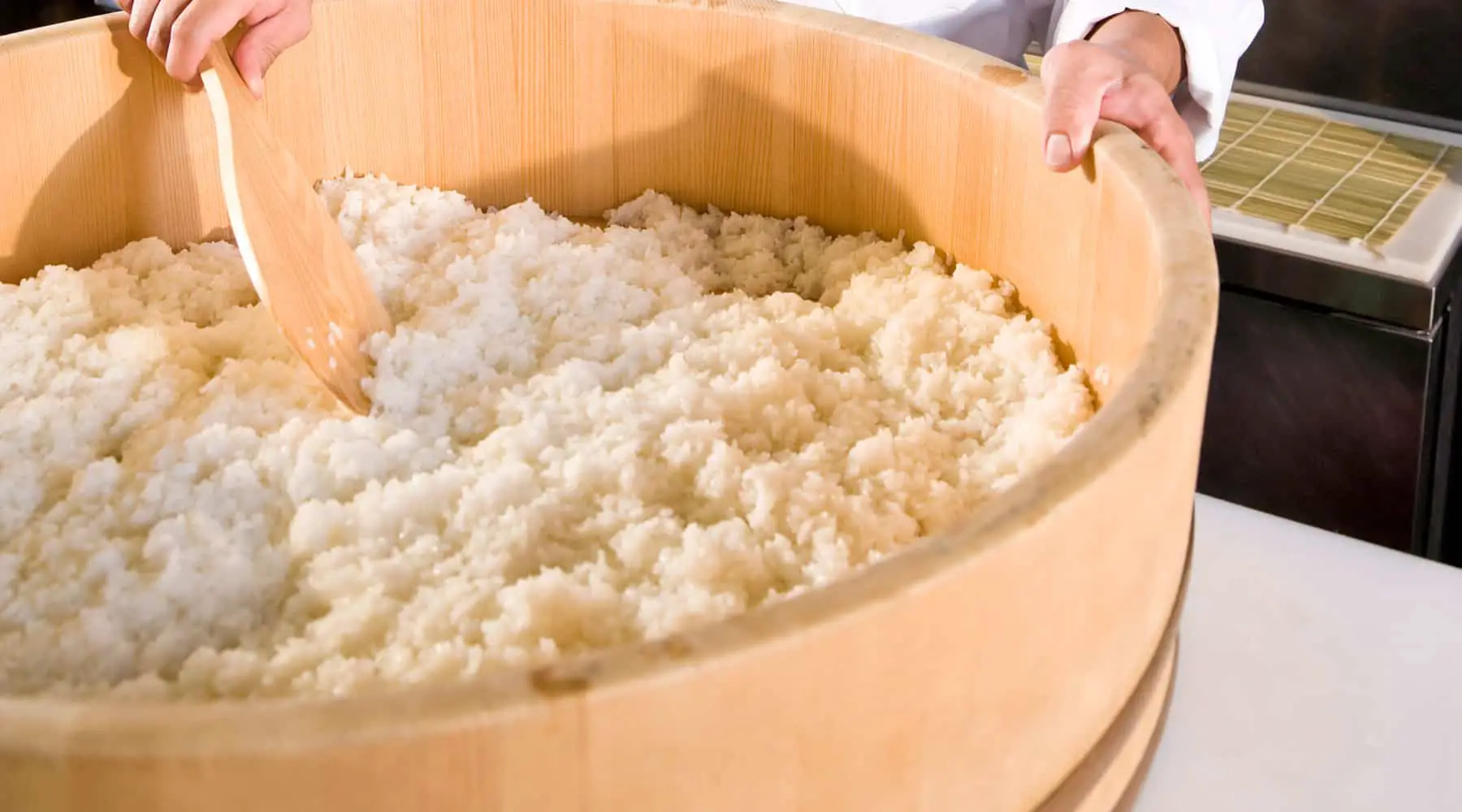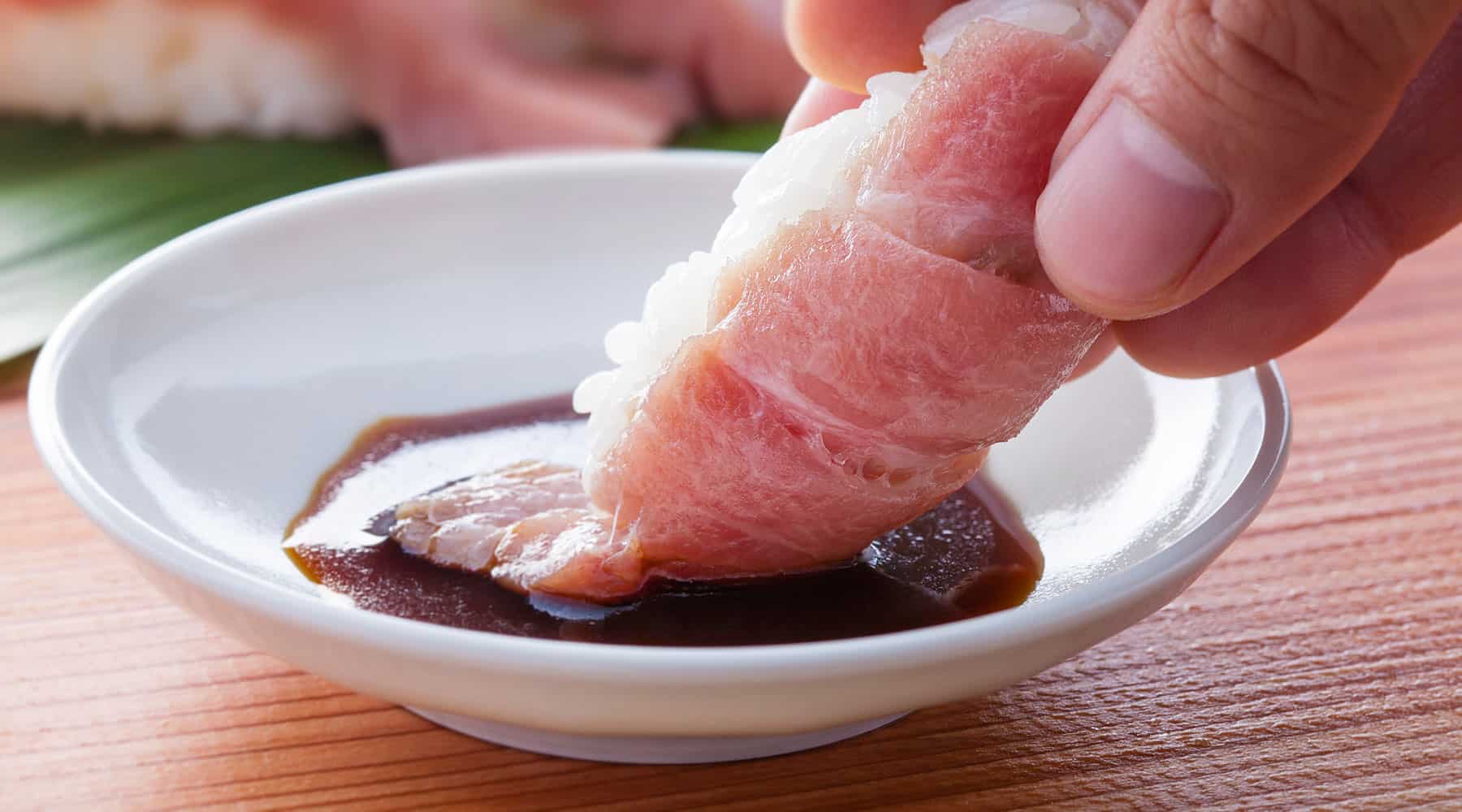Sweet soy sauce is traditionally used on nigiri as a final touch. It is a relatively thin glaze that really compliments raw fish.
From Feudal Japan to the Megacity of Tokyo, traditional sushi chefs have always made the “perfect Bite.” The Perfect Bite refers to the idea that each piece of Nigiri is hand crafted and comes with every condiment/sauce to make the perfect flavors according to the main ingredient.
This means that each piece of nigiri had both soy sauce AND wasabi on it! I’ll go more into details later, but for now- lets focus on the soy sauce part.
Modern soy sauce is very strong and can easily over power the subtle taste of raw fish. That’s why sushi chefs made their own version which has multiple layers of flavor and is mildly sweet.
Have you ever seen a picture of a chef brushing or glazing a piece of fish?
This is it! This is what they are doing. They are adding Nikiri (sweet soy sauce) to the nigiri, just before handing the plate to the customer.
This is one of the few traditional sauces shown on the site. If you want to be truly traditional, there is a much more complicated version of this sauce that requires additional ingredients. But for now, I will just show you the simple version!
Here are the ingredients you will need:
- Shoyu (Soy sauce)
- Mirin (sweet, low alcohol, rice wine- non alcoholic versions also available)
The steps are VERY simple:
- Add 1/3-1/4 cup of Mirin and 1 cup of soy sauce to a pan
- Bring the sauce to a boil (to help eliminate alcohol) and stir occasionally
- Once the sauce reaches boiling point, reduce the heat to a low simmer
- Allow the sauce to simmer for approx. ten minutes. That sauce should be about twice as thick.
If you put sweet soy sauce on top of your nigiri, be sure to instruct your guests NOT to add any additional soy sauce! No dipping, please.
**EDIT
By request, here is my own version of Nikiri.
As it turns out, recipes for Nikiri are usually trade secrets and/or heavily guarded by the individual sushi restaurants. In modern day sushi establishments this sauce is still fairly rare to find. I did manage to find a great combination of ingredients that creates the subtle, delicate, yet complex flavor addition to nigiri that many of us are looking for.
For this tutorial, you will need:
- 5 oz Tamari (lighter flavored, gluten free soy sauce) or 148ml
- 1 piece of Konbu (dried kelp) or 10g
- 5g of Bonito Flakes (fish stock)
- 2 oz Mirin or 60ml
- 2oz Sake or 60ml
- 3 Cups of water or 710ml
- Large measuring cup
- Medium pot
- Coffee filter or mesh screen
This recipe make just over 2 cups or 273ml.
1. Start by bringing your 3 cups of water to a boil and adding your konbu.
2. Allow the water to boil off until you have roughly 1 cup left. This takes roughly 20 minutes to do.
3. Reduce the heat and carefully remove the konbu (I did this with a pair of chopsticks) and add your bonito flakes.
4. Bring the heat back up to a boil, stirring occasionally. This is the known as Awase Dashi, or combination broth in Japanese. While our dashi coming back up to a boil, mix the Mirin, Sake, and Tamari into a measuring cup and slowly pour it into to pan.
5. Once the sauce reaches a boil, reduce the heat and allow it to simmer. I did this for about 20 minutes, but you can simmer it longer if you want a slightly thicker Nikiri sauce.
Now, grab your coffee filter or mesh screen and carefully pour your sweet soy sauce back into the measuring cup- removing the bonito flakes.
I had some difficulty getting my coffee filter to stay in place while I poured. Be careful not to burn yourself!
6. Now allow your nikiri to cool down before pouring it into a container. After use, be sure to put it in the refrigerator. It lasts up to 4 weeks!

